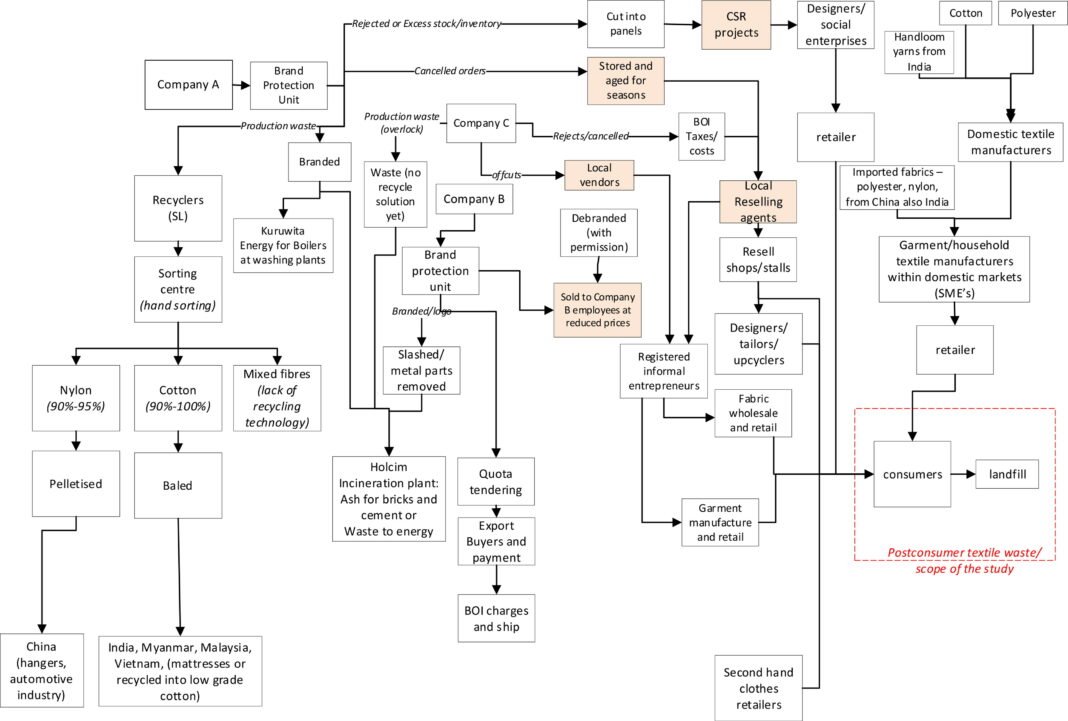Summary
A team of researchers led an investigation into the textile-based waste, in hopes of accurately defining and breaking down the components of the problem. The study took place in Colombo, Sri Lanka because, “The most recent publicly available study estimates that the percentage of textiles in total landfill volumes in Sri Lanka is worryingly similar to the USA” (Sinha 1).
Specifically, the team focused on Post-Consumer Textile Waste (PCTW) which includes, “textile products that are disposed of as the owner no longer wants it” (Sinha 1). The results were as follows:
“This preliminary study revealed that Sri Lankan consumers’ disposal behavior for PCTW is similar to developed economies, with the exception of burying and burning PCTW (due to their local context such as waste management infrastructures). Research also finds that Sri Lanka (as many developing economies) endures an inefficient solid waste management and absence of collection and recycling technologies for post-consumer textiles. Lack of source separation of PCTW, recycling technologies, and public perception of value in PCTW represents a huge challenge in terms of market creation for PCTW and achieving sustainable consumption.” (Sinha 9)
Analysis
The perfect formula for solving post-consumer textile waste will not arise during the development phase of one wearable product. It is a systemic issue that must address: textile volume, consumer behavior, local waste management practices, supply chain innovations. However, I can do my due diligence in mitigating the impact this particular wearable will have. That includes making considerations like:
Textile durability: a product that can weather the wear and tear of soccer games, limiting the amount of times it needs to be repurchased
Extending life cycle: increasing the desire to hold onto the product long term
Wearable afterlife: considering where the product will go after the consumer discards it
Environmental impact: developing a product that minimizes environmental impact in spite of consumers poor sustainable disposal behavior
Fashionable value: how and what is valued of the textiles/clothing
Sources
Aamer Khan, Komal Iftikhar, Danial Saleem, Sajjad Akhtar. (2022) Recycled Polyester and Cotton Blended Siro Spun Yarns and Fabrics: A Sustainable and Eco-friendly Approach. Journal of Natural Fibers 0:0, pages 1-18.




